Our Breeds
“We work with the following Meat breeds..”
Kalahari Red Goat
The Kalahari Red is a breed of goat originating from South Africa. Their name is derived from their red coat and the Kalahari Desert.
Kalahari goat is good for meat production.
The Kalahari Red goat has adapted to resist their harsh environment, having their red coats as a means of protection against sunlight and naturally built to resist diseases.
At 100 days a ram weighs 35kg and Ewe 30 kgs.
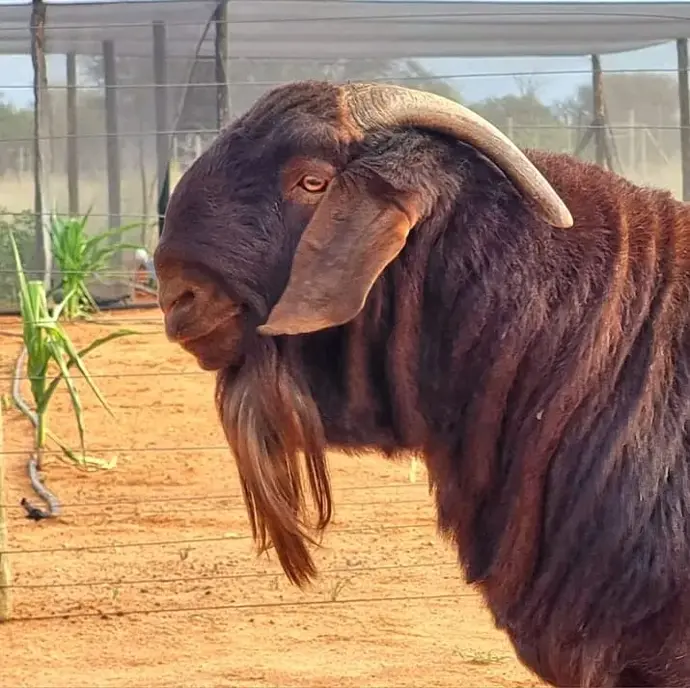
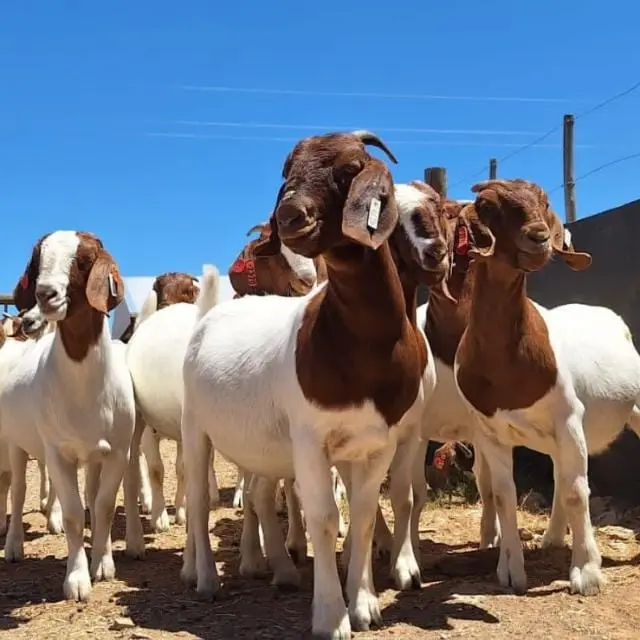
Boer Goat
The Boer or Boerbok is a South African breed of meat goat. It was selectively bred for meat qualities and for the ability to survive by grazing in the ASAL region.
Masaku H&L partner Karoo Livestock can import to Kenyan markets and has been used to improve the meat qualities of other breeds.
At 100 days a ram weighs 35kg and Ewe 30 kgs.
SASSO Chicken
The Sasso chicken is a group of improved kienyeji bred to grow under all manner of rearing systems and reach a market weight of 2 kilograms in 3 months, the Sasso Breed is a choice for those who want to take advantage of the in-betweens of the traditional free-range Kienyeji chicken and the fast-growing hybrid broiler.
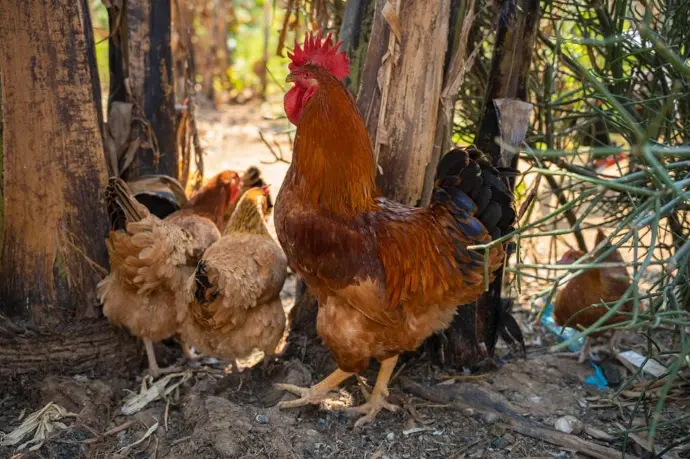
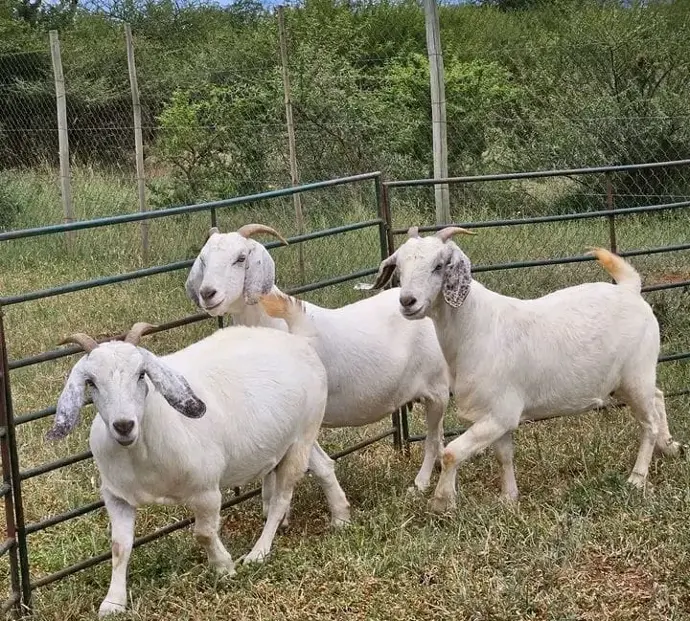
Savannah Goat
The white Savanna goat is a South African indigenous goat has white color dominance over other colors.
In the rugged, harsh bush country where temperatures and rainfall can vary to a marked extent, natural selection played a big role in the development of these fertile, easy-to-care-for, heat and drought-resistant animals. These goats have thick, pliable skins with short white hair.
The Savanna has excellent reproduction, muscular development, good bones, and strong legs and hooves.
Savanna goat is a hardy meat goat breed.
Savanna kids grow faster after birth and nurse quicker than their other goats.
The breed is a large framed, extremely well-muscled goat with white color.
The body characteristics resemble those of the Boer goat.
The breed is very adaptable and is successful on free range grazing, as well as on zero pastures.
We recommend Savannah goat cross with local Galla Goat for meat production.
At 100 days a ram weighs 35kg and Ewe 30 kgs.
Van Rooy Sheep
Van Rooy sheep are medium to large-sized animals with entirely white body. They have drooping ears, and both rams and ewes are polled.
This is a meat sheep breed. It is raised mainly for meat production.
The Van Rooy sheep are strong and hardy animals. The breed can be raised in arid areas where survival and reproduction on natural grazing are essential for the economic production of meat.
Van Rooy is strong and hardy, good for crossbreeding with other sheep breeds for producing a heavier slaughter lamb.
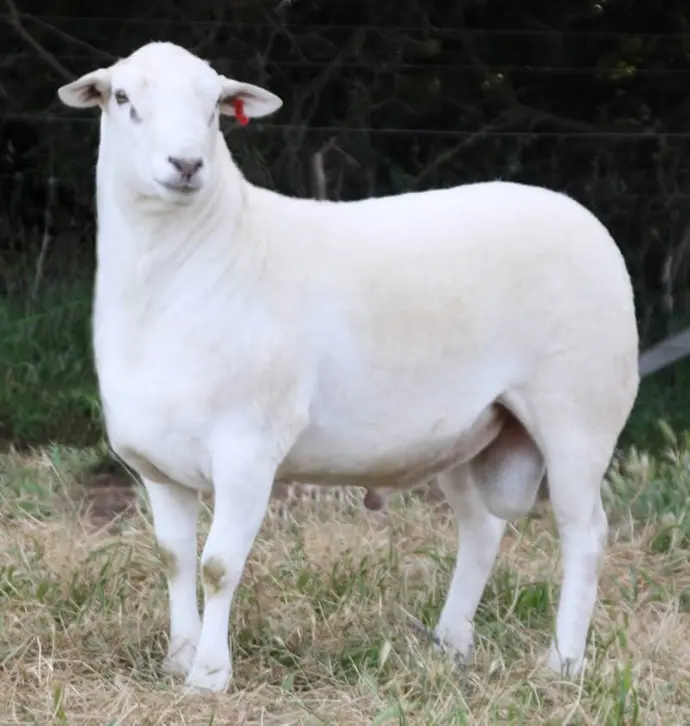
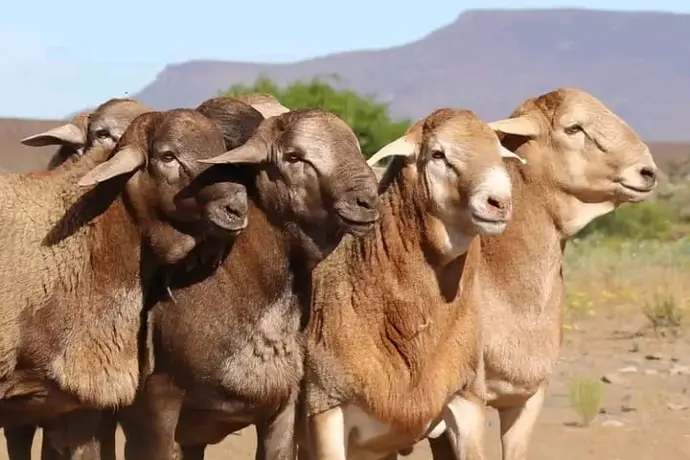
Meatmaster Sheep
The Meatmaster sheep is a breed of domestic sheep from South Africa in the early 1990s.
It was created to improve the meat characteristics of African fat-tailed sheep breeds. Hardiness and suitability for desert life were the main advantageous characteristics of the fat-tailed sheep.
The Meatmaster sheep breed has an increased amount of muscle and a better distribution of fat.
Meatmaster bloodline is a composite of breeds, such as Van Rooy or South African Meat Merino, Dorper but must contain Damara breeding.
Meat master sheep is a very active animals well adapted to arid climate, the ewes have very good mothering instincts, highly valued for meat production
A mature ram's weight varies between 85 and 105 kg, and the mature ewe’s weight varies from 60 to 70 kg.
Dorper Sheep
Dorper sheep is a combination of the Blackhead Persian and the Dorset Horn created for meat production that would be more tolerable of the area’s dry climate.
A fast-growing sheep, it is easy to care for and has a very light mixed coat of hair and wool that it sheds early in the summer.
Raised to survive in the most arid climates of the year, it has one characteristic that is standard for the breed – a complete blackhead. However, there are White Dorper sheep, too, and these sheep have whiteheads. It’s a large breed (the second largest in South Africa, in fact), and is an excellent breeder.
Fully grown weights Ram 102 kg – 124 kg and Ewe weighs 72 kg – 99 kg
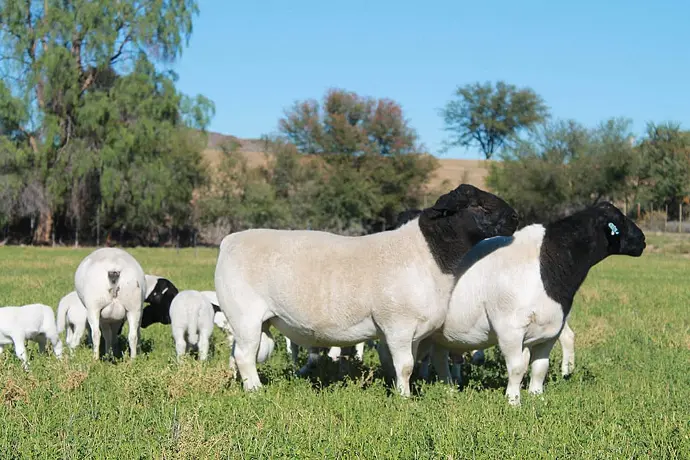
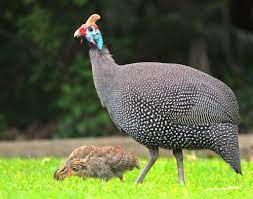
Guinea Fowl
Many poultry farmers in Africa are doing the helmeted Guinea Fowl farming business successfully, mainly to make profits.
The guinea fowl are very hardy, vigorous, and largely disease-free birds.
At Masaku H&L, we encourage livestock farmers to integrate SASSO Chicken and Guinea Fowl for means of pest control. The flocks of guineas generally kill and eat mice, tick, and small rats.
Guinea Fowl are used for controlling wood ticks and insects such as crickets, grasshoppers, and flies.
Guineas generally prefer to roam freely, although they can be kept confined. The more space you have to allow your birds to roam, the happier they will be.
Commercial production is very profitable. Demand for guinea fowl products is high. You can enjoy fresh guinea fowl meat or eggs if you start your own guinea fowl farming business.